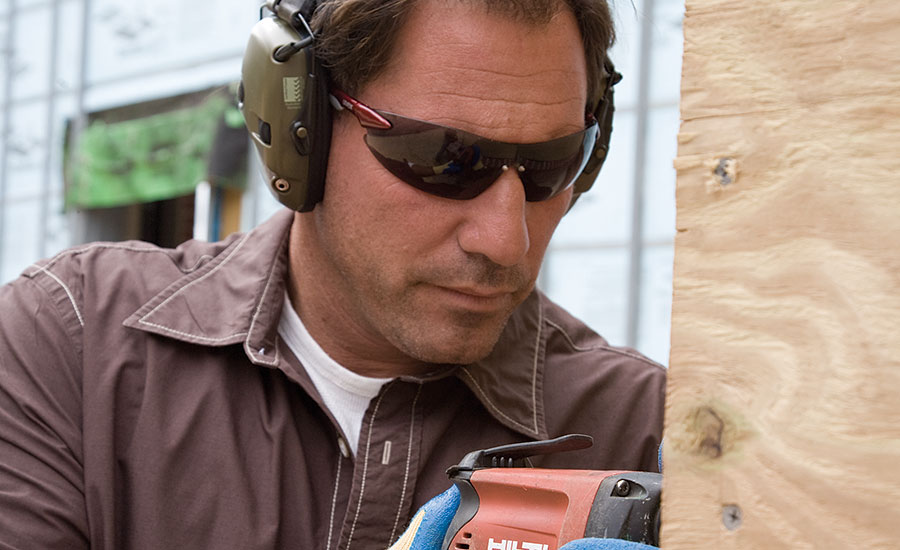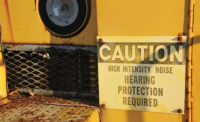Many companies implement the required elements for an OSHA standard Hearing Conservation Program, believing they have stopped noise-induced hearing loss at their workplace. But despite all the required pieces being in place, a number of workers still exhibit a shift in hearing (Standard Threshold Shift), and liability for workplace hearing loss increases.
What went wrong?
Today’s OSHA regulations, built upon federal noise standards from 1970, adopted an eight-hour 90 dB Permissible Exposure Limit that was expected to protect only about 80 percent of noise-exposed workers.1 The remaining 20 percent would be expected to incur a material hearing impairment – certainly an unacceptable risk for employers by today’s standards.
Eliminating noise and reducing exposures through engineering or administrative controls is always the front line of defense against workplace hearing loss.
But when those controls are infeasible or fail to adequately reduce exposures, what more can be done to prevent hearing loss?
Some great answers to that question have been implemented by winners of the Safe-in-Sound Award for excellence in hearing loss prevention, presented annually by NIOSH.2 The following five adjustments to a Hearing Conservation Program are low-cost and relatively easy to implement.
Train workers how to fit
It is not enough to simply pass out earplugs. Employers need to invest the time to train workers how to fit. Studies at several large employers show that, when asked to insert their earplugs “the way you normally wear them,” more than 50 percent of workers are unable to demonstrate a proper fit of the earplug — that is, they achieve protection levels less than 15 dB.
The best training comes from one-on-one demonstration (not group training), and highlights a three step process: roll down a foam earplug, pull the ear outward to spread open the ear canal, and insert the earplug deeply. When workers receive that type of individual training in proper fit, they have higher rates of comprehension and retention. (See links for free online how-to-fit videos in references.3)
Offer a variety
When an earplug fails to protect, it is due to improper fit or improper selection. Ear canals come in a variety of sizes, yet many well-intentioned safety managers only offer one option, assuming one size fits all. They select large foam earplugs because they carry a higher Noise Reduction Rating (NRR). But a large foam earplug will be a poor choice for many workers with smaller ear canals.
Simply offering a variety of sizes and styles will significantly increase the percentage of employees who can achieve an adequate fit. At most locations, an adequate variety would include four styles of earplugs: a large foam earplug, a smaller foam earplug, a large reusable earplug, and a smaller reusable earplug.
Accommodate communication
In a comprehensive study of hearing protector usage4, NIOSH researchers asked hundreds of workers a simple question: Why do you not use your earplugs more consistently? The most prevalent answer was both surprising and telling: “Using hearing protectors limits my ability to communicate and perform my job.”
While there are no magic valves in hearing protectors that keep out “bad noise” while allowing “good noise” to pass through, there are some protectors that are more “speech friendly” than others. Sound management earmuffs, for example, utilize a circuit that restores speech to understandable levels, while still protecting from hazardous impact noise.
How to handle intermittent noise
A common dilemma of an industrial hygienist is how to manage workers with intermittent noise exposures. While the time-weighted average of these workers may not consistently be over the OSHA Action Level, they may occasionally be exposed to extreme noise levels. Construction sites are a common example of this dilemma. How should workers be protected in a way that avoids overprotection (during periods of relative quiet) but still provides adequate protection (during periods of intermittent hazardous noise)?
For these situations, easy access and easy insertion are the prime factors in selecting a hearing protector.
Verify with fit-testing
In a Best Practices Bulletin issued as an OSHA Alliance document5, hearing conservation experts endorsed fit-testing of hearing protectors as a best practice, and defined seven practical benefits from it. These include the ability to select the right protectors for new hires, train existing workers, and re-train those who demonstrate a shift in their hearing.
While an OSHA-standard Hearing Conservation Program sets a good framework for measuring and addressing noise hazards, compliance alone is no guarantee of stopping hearing loss. But by implementing a few simple and low-cost proactive measures such as the five described above, safety managers can transform their Hearing Conservation Program into the powerful tool it was intended to be — to prevent noise-induced hearing loss.
References
1. US Department of Labor (1970). “Guidelines to the Department of Labor’s occupational noise standards for federal supply contracts,” Bulletin 334.
2. See case studies of winners of NIOSH Safe-In-Sound “Excellence in Hearing Loss Prevention Award” (www.safeinsound.us).
3. www.youtube.com/hlhearforever
4. Morata, T. “Issues regarding hearing protection device use in manufacturing and mining,” NIOSH. Presented at Acoustical Society of America, 2003.
5. OSHA Alliance Best Practice Bulletin, “Hearing Protection - Emerging Trends: Individual Fit Testing,” 2008.





